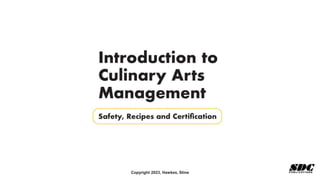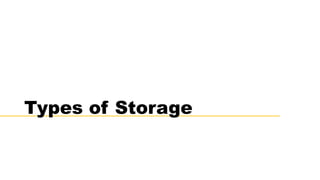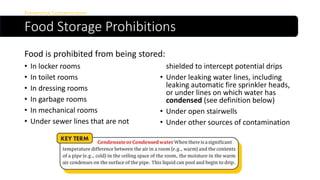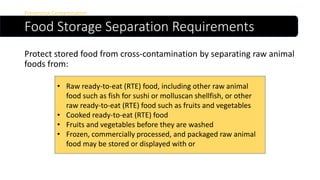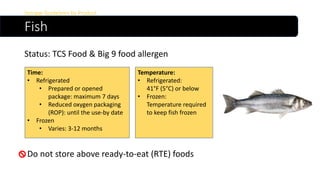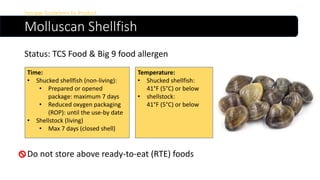This document provides guidance on proper food storage in commercial kitchens. It discusses dry storage, refrigerated storage, freezer storage, and garbage storage areas. It provides requirements for preventing contamination during food storage, including prohibiting storage in inappropriate areas and separating raw and ready-to-eat foods. Storage cleaning guidelines and specific guidelines for storing various food products like meat, poultry, fish and eggs are also outlined.
